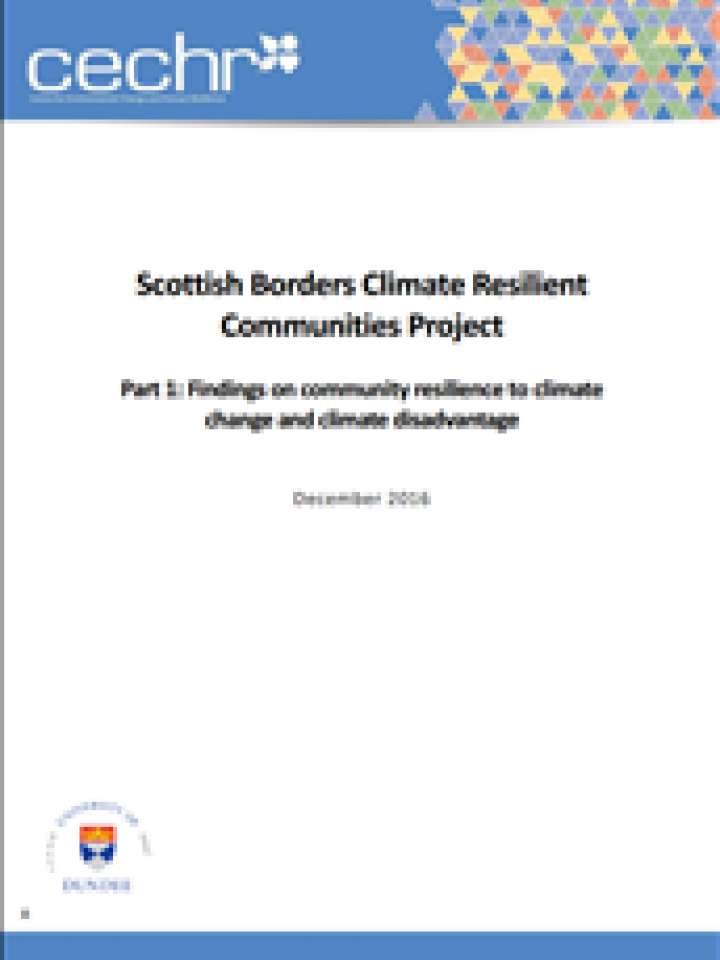Scottish Borders climate resilient communities project: findings on community resilience to climate change and climate disadvantage
This report presents findings from a research project conducted in the Scottish Borders with the aim to support a local process of community change through building partnerships, learning and capacity building. It also aimed to understand the critical factors involved in facilitating the development of community resilience.
Six groups within communities were identified as particularly disadvantaged by climate change: elderly people and those with existing health issues; people on low incomes; local businesses; tenants; essential infrastructure users; and families with young children.
The research identified combinations of interrelated factors and critical dynamics underpinning disadvantage by analysing the interrelationships of different factors. This enabled identification of key leverage points for strategic and targeted action to enahnce community resilience, including a need for greater focus on:
- Integrated working to take into account the integrated nature of the challenges;
- Opening up key bottlenecks in the system, including enhancing community capacity for resilience and ability to manage household budgets;
- Working with the underlying stresses directly associated with climate change (e.g. food, energy, water prices) and the synergies of these with other stresses (e.g. chronic health issues) which together combine to reduce resilience to shorter term shocks;
- Capitalising on the opportunities provided by crises which engender community interest in helping those most vulnerable, to enhance overall community cohesion and capacity (e.g. through ‘artificial crises’, such as exercising, or through strategic activities when real crises occur);
- Targeting local activities that reduce carbon emissions, which is one of the most effective ways of enhancing resilience to climate change over the longer-term;
- Understanding the underlying values, rules, norms and goals driving communities and finding ways to draw out alternatives that are more aligned to environmentally and socially sustainable patterns of activity.
Explore further
